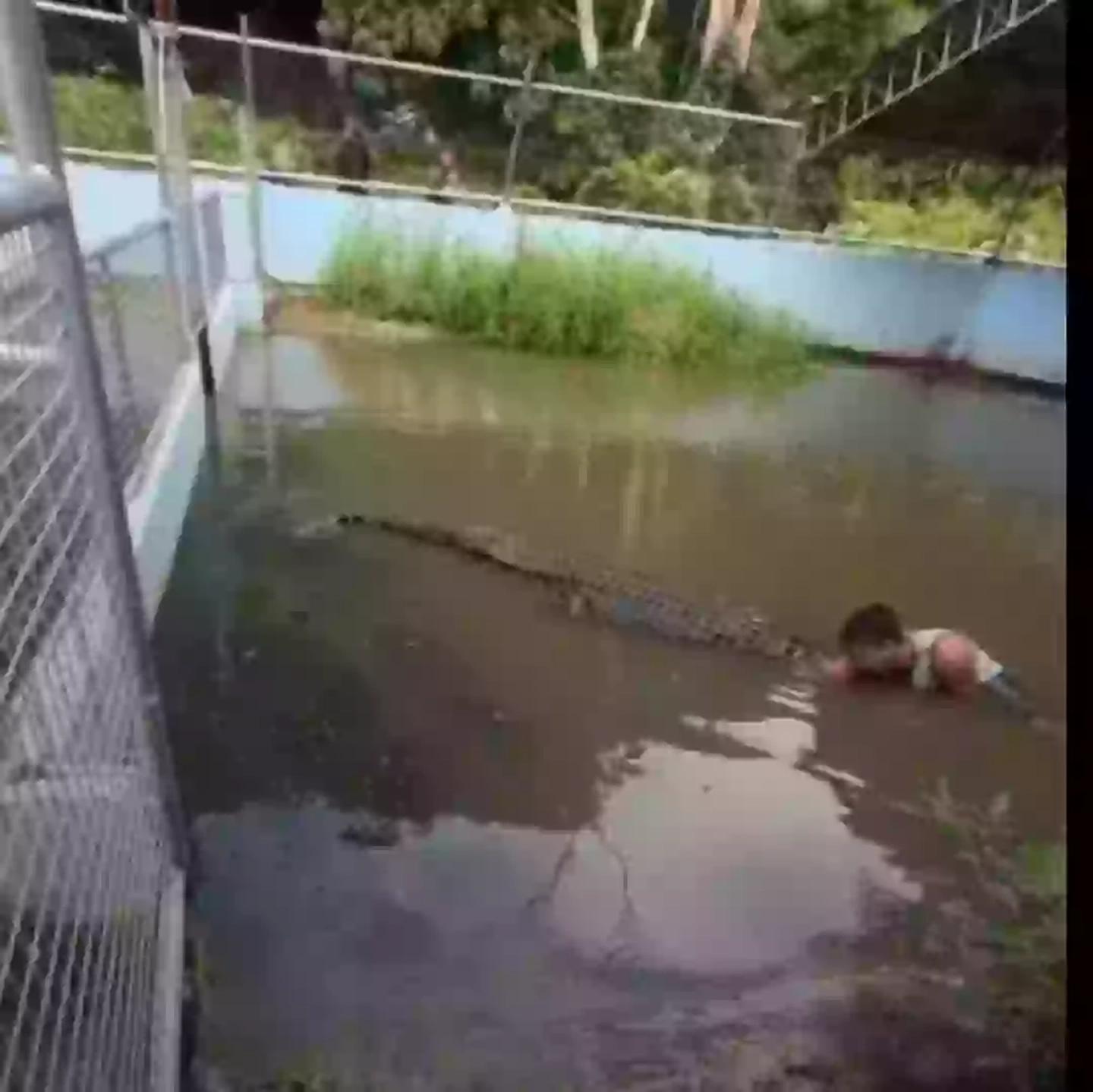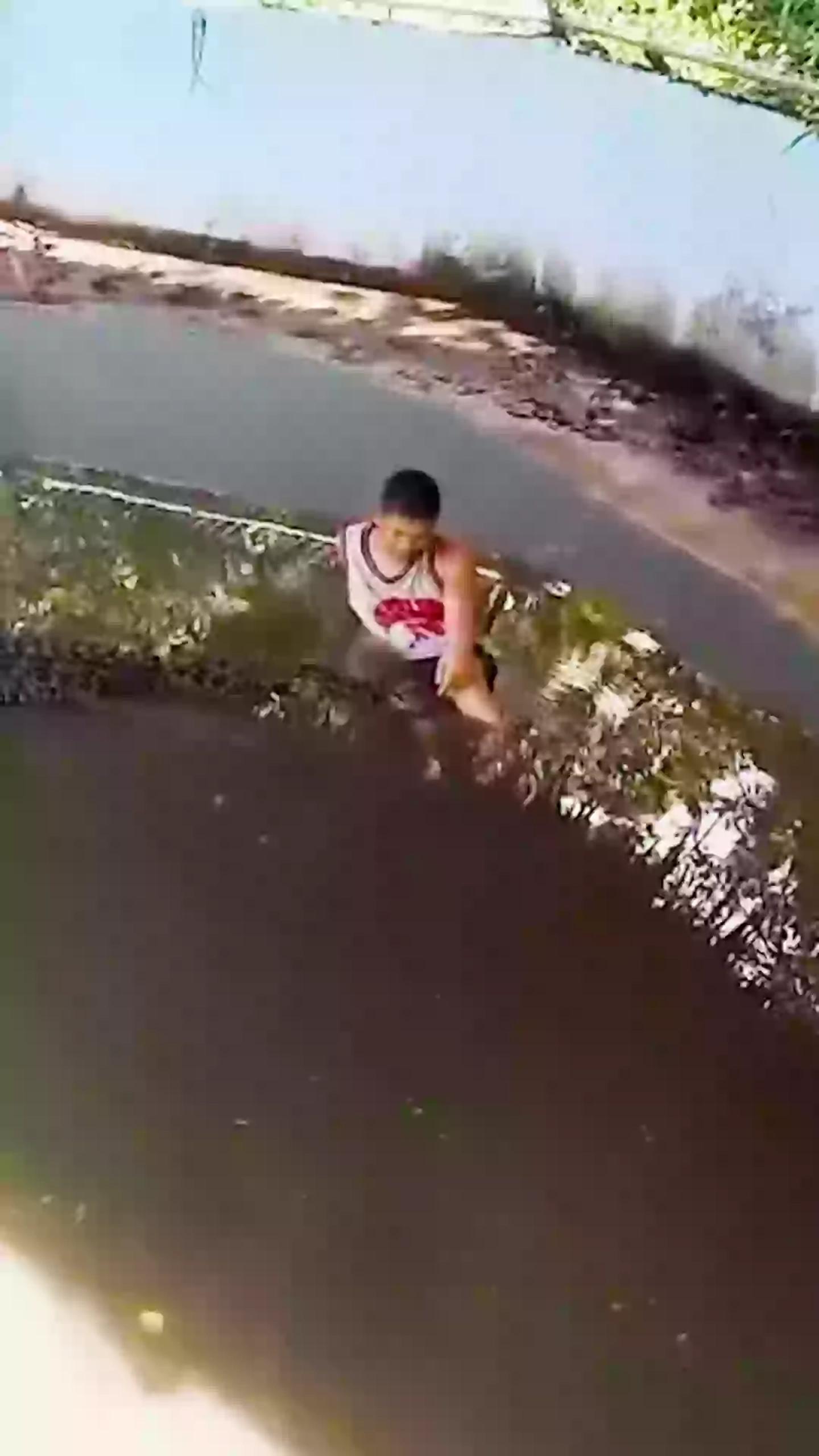The 29-year-old visitor reportedly spotted what he assumed was just a decorative crocodile statue. Feeling bold, he decided to scale the fence, wade into the shallow waters of the enclosure, and take out his phone to snap a selfie. But in a matter of seconds, he learned in the most painful way that the creature was very real—and very alive.
Police Staff Sergeant Joel Sajolga, from Siay Municipal Police, spoke with local media and explained: “The tourist was walking around the area, then he saw the crocodile, which he thought was just a plastic fixture.”
“He climbed the fence and entered the enclosure, and the crocodile attacked him.”
She then performed a brutal move, flipping him over and spinning him in the water much like a rotisserie chicken being turned on a spit. This technique, often seen in crocodiles and alligators, is widely recognized as the notorious ‘death roll.’
According to the University of Tennessee, Knoxville: “Contrary to popular belief, crocodiles can’t chew, so they use a powerful bite coupled with a full-bodied twisting motion – a death roll – to disable, kill, and dismember prey into smaller pieces.”

Reports indicate that the man remained inside the enclosure for a shocking 30 minutes, dangerously close to Lalay, before any help arrived. It wasn’t until one of the zoo’s animal handlers showed up that the situation began to turn.
Using a piece of cement, the handler struck the crocodile on the head. Thankfully, this forceful move caused Lalay to release the man from her jaws.

He was quickly rushed to a hospital where he underwent treatment for numerous bite wounds. In total, he required more than 50 stitches to close up the damage.
Many witnesses were relieved that the man pulled through. But at the same time, others couldn’t help but wonder what possessed him to take such an unbelievable risk in the first place.
He stated: “This kind of behavior is very dangerous. Nobody should ever enter an animal’s enclosure at the zoo.”
“He put other people’s lives at risk and he is very lucky to have survived.”